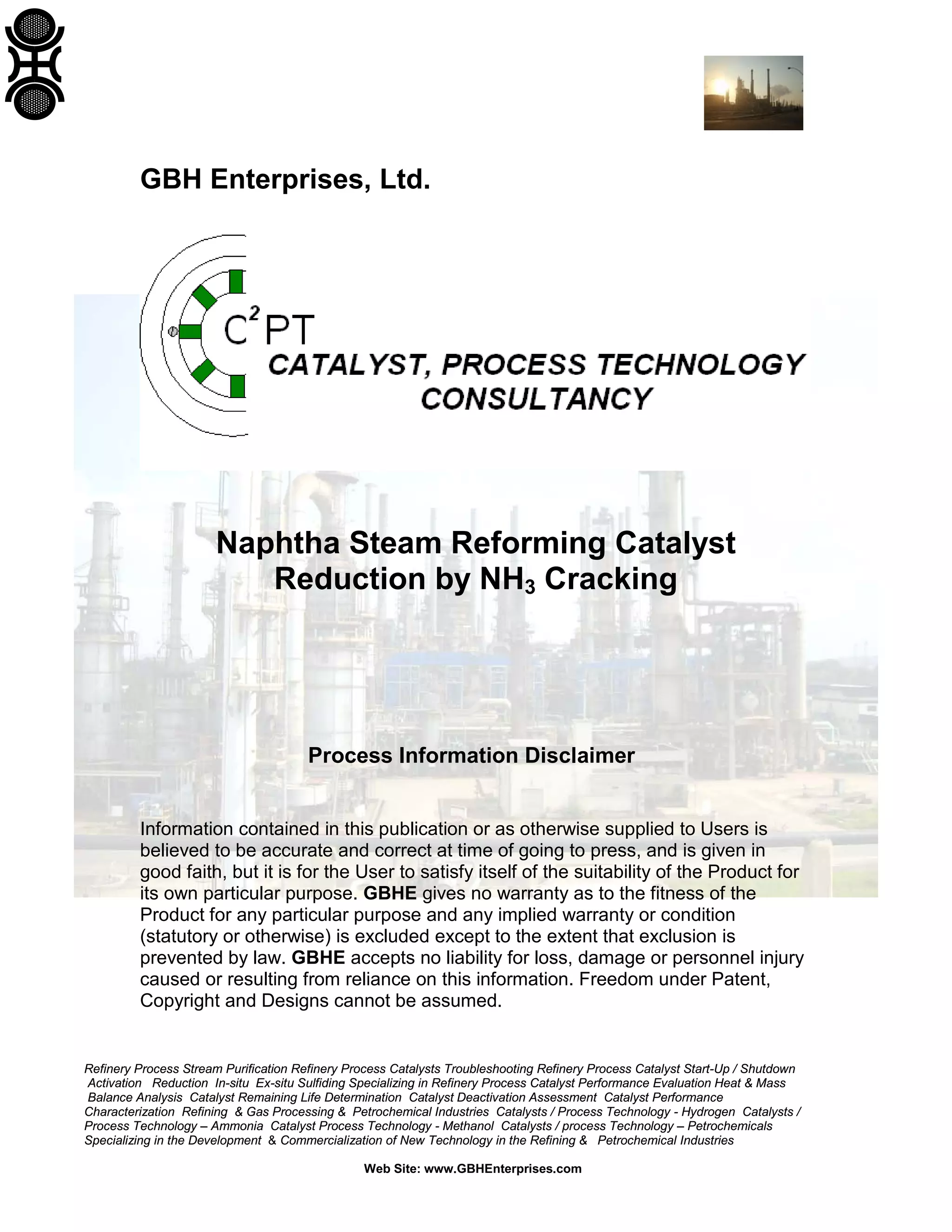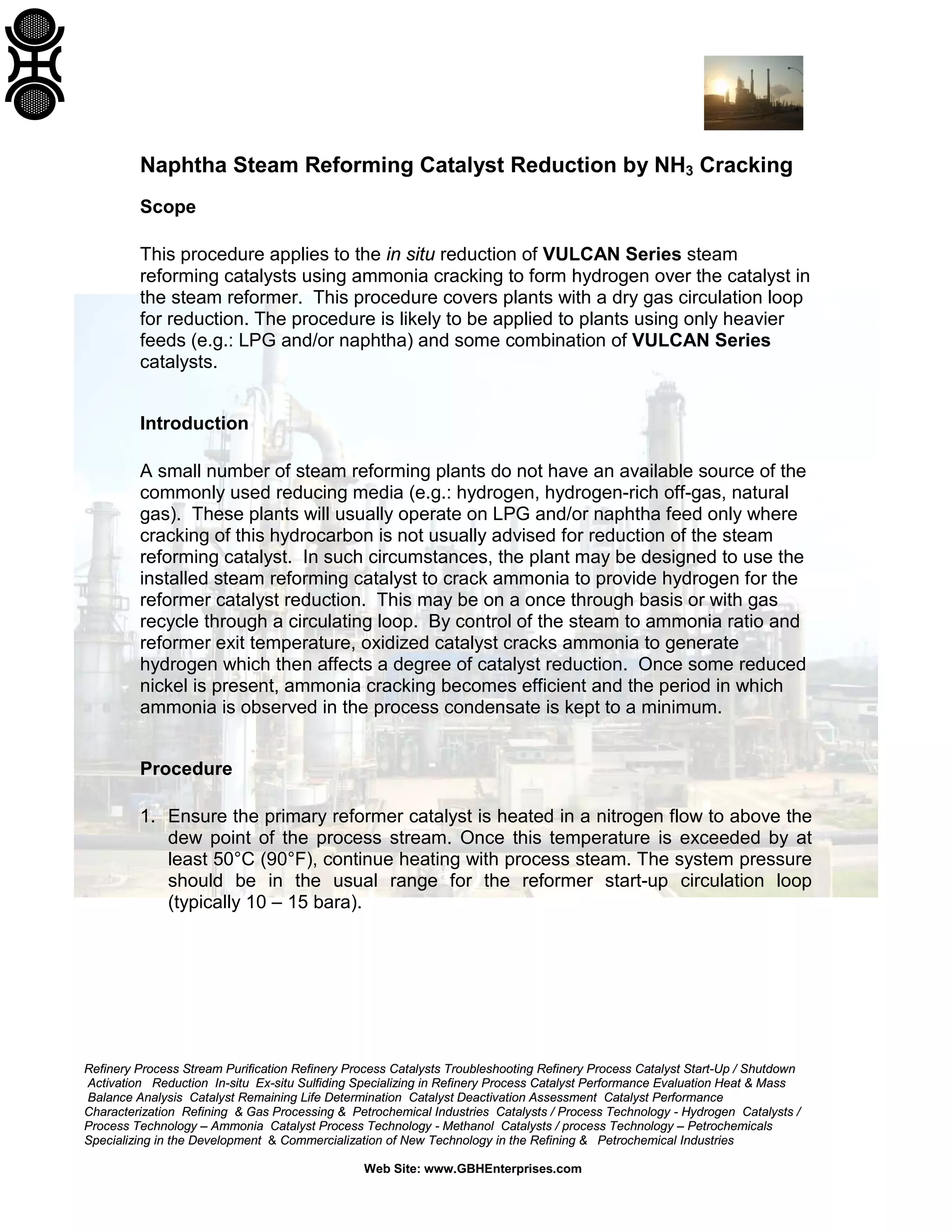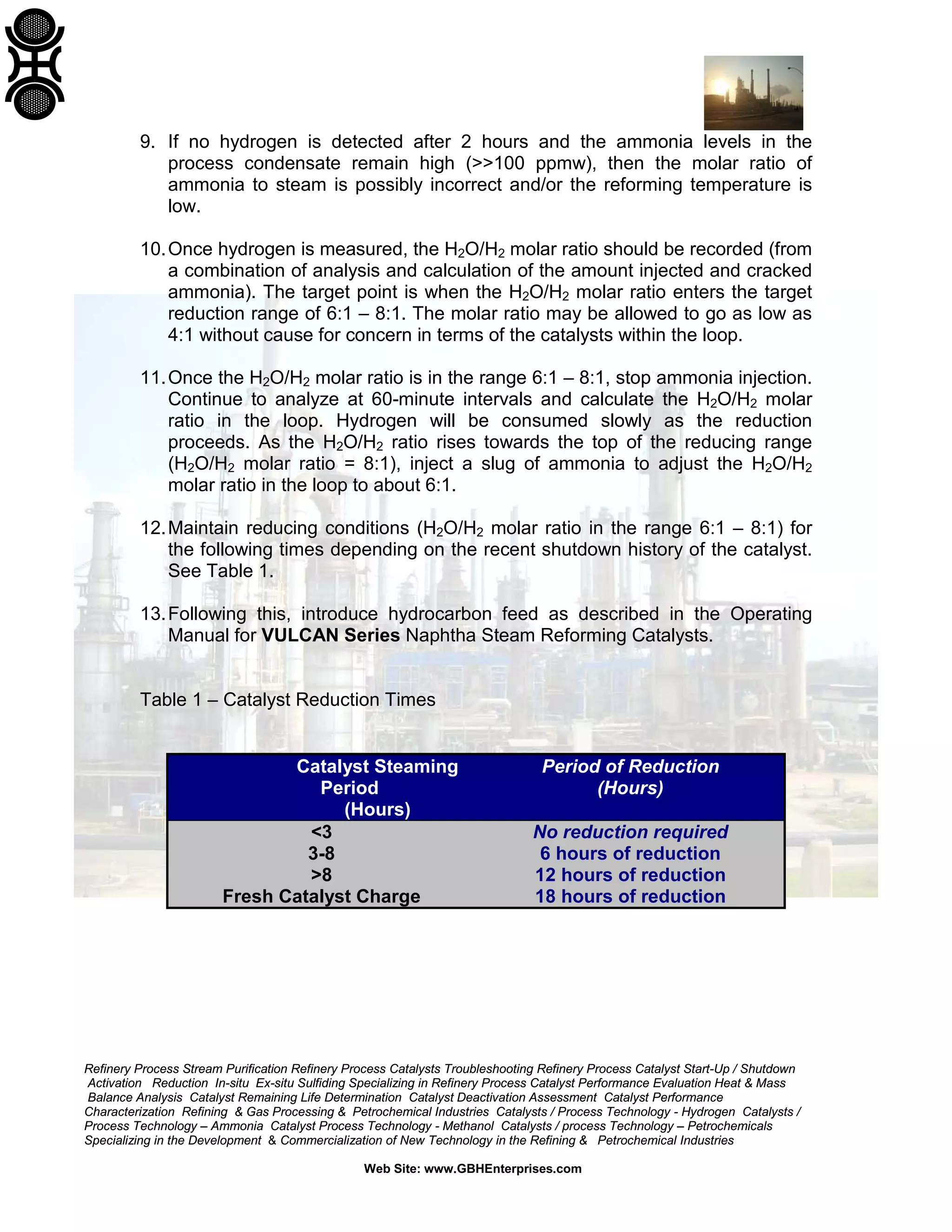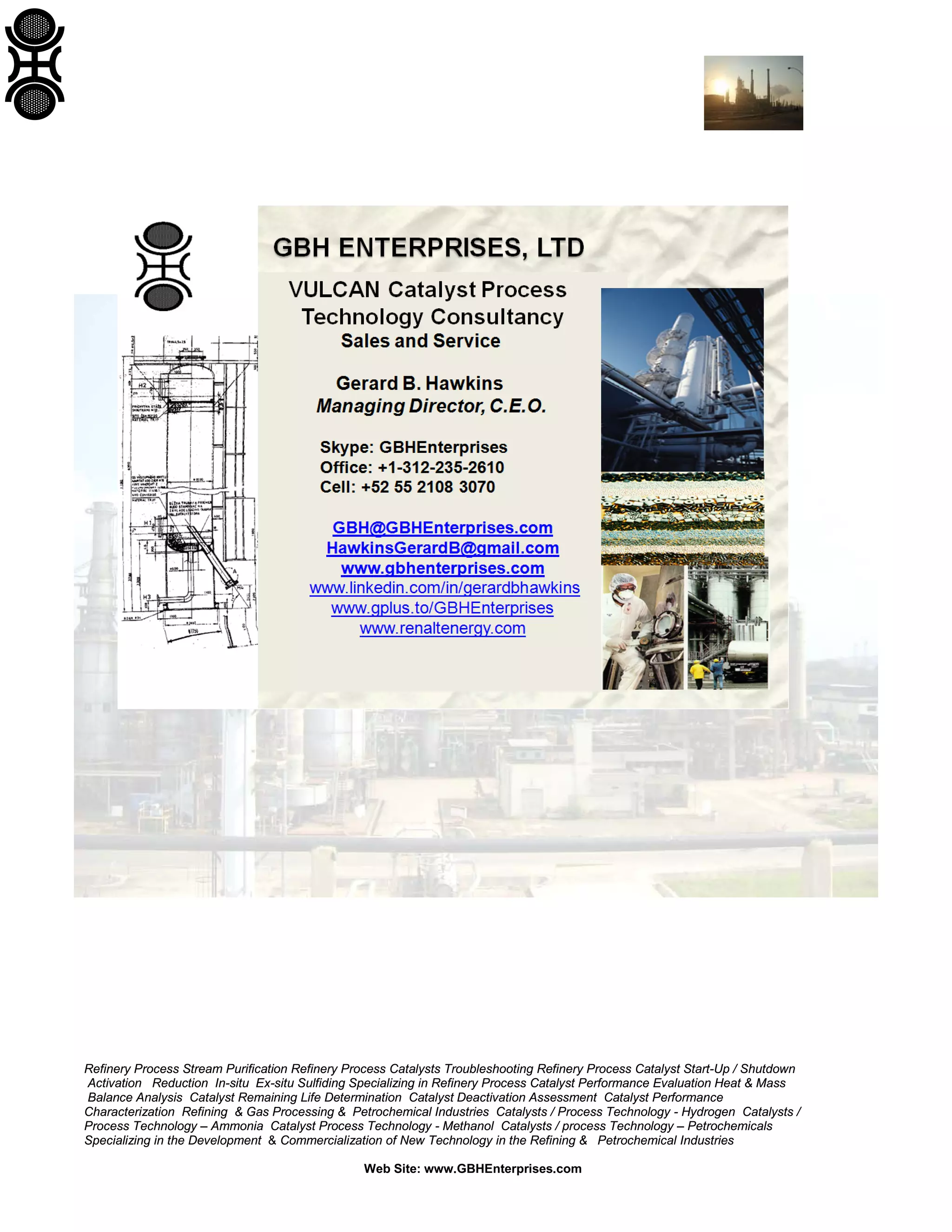The document outlines a procedure for the in situ reduction of vulcan series steam reforming catalysts using ammonia cracking to generate hydrogen in plants without a common reducing media source. It includes step-by-step instructions for catalyst activation, ammonia injection, and monitoring of process conditions, with specific attention to optimal temperature and molar ratios of steam to ammonia. The information is provided by GBH Enterprises, Ltd., along with a disclaimer about the accuracy and applicability of the content.




